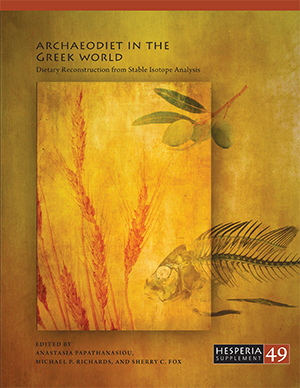Archaeodiet in the Greek World: Dietary Reconstruction from Stable Isotope Analysis

The analysis of stable isotope ratios of carbon and nitrogen in bone collagen provides a powerful tool for reconstructing past diets, since it provides the only direct evidence of the foods that were actually consumed. The chapters that comprise this volume describe the application of this methodology to the archaeology of Greece, a country whose archaeobotanical remains have been isotopically studied more extensively than any other place in the world. The archaeological issues that can be addressed using stable isotope methods include the importance of fishing; the possible early introduction of millet; the nature of childrearing including weaning age and weaning foods; temporal shifts in protein consumption; differential access to certain foods associated with social status as well as gender and age; and cultural differences in dietary patterns. Additionally, diet is strongly correlated with health or stress markers in the teeth and bones. Knowing what people ate has vital implications for our understanding of past environments and economies, subsistence strategies, and nutrition.
Reviews:
"This is an excellent volume integrating archaeological, historical, bioarchaeological, and isotopic resources into a synthetic interpretation of the Greek diet. . . . If you are interested in dietary reconstruction in Greece or the Eastern Mediterranean, this book will be an essential resource." Nicholas P. Herrmann, American Journal of Physical Anthropology 160 (2016), pp. 740-741
"While a specialized topic within archaeology, this volume should be required reading for anyone who is interested in the archaeology of food or subsistence, Greek archaeology (both prehistoric and historic), and archaeological science." Elizabeth R. Arnold, JEMAHS 5.3-4 (2017)
